77 photography tips and tricks for taking pictures of anything
There's a lot to sink your teeth into
Night photography techniques, tips and tricks
Tip 1. Use a tripod
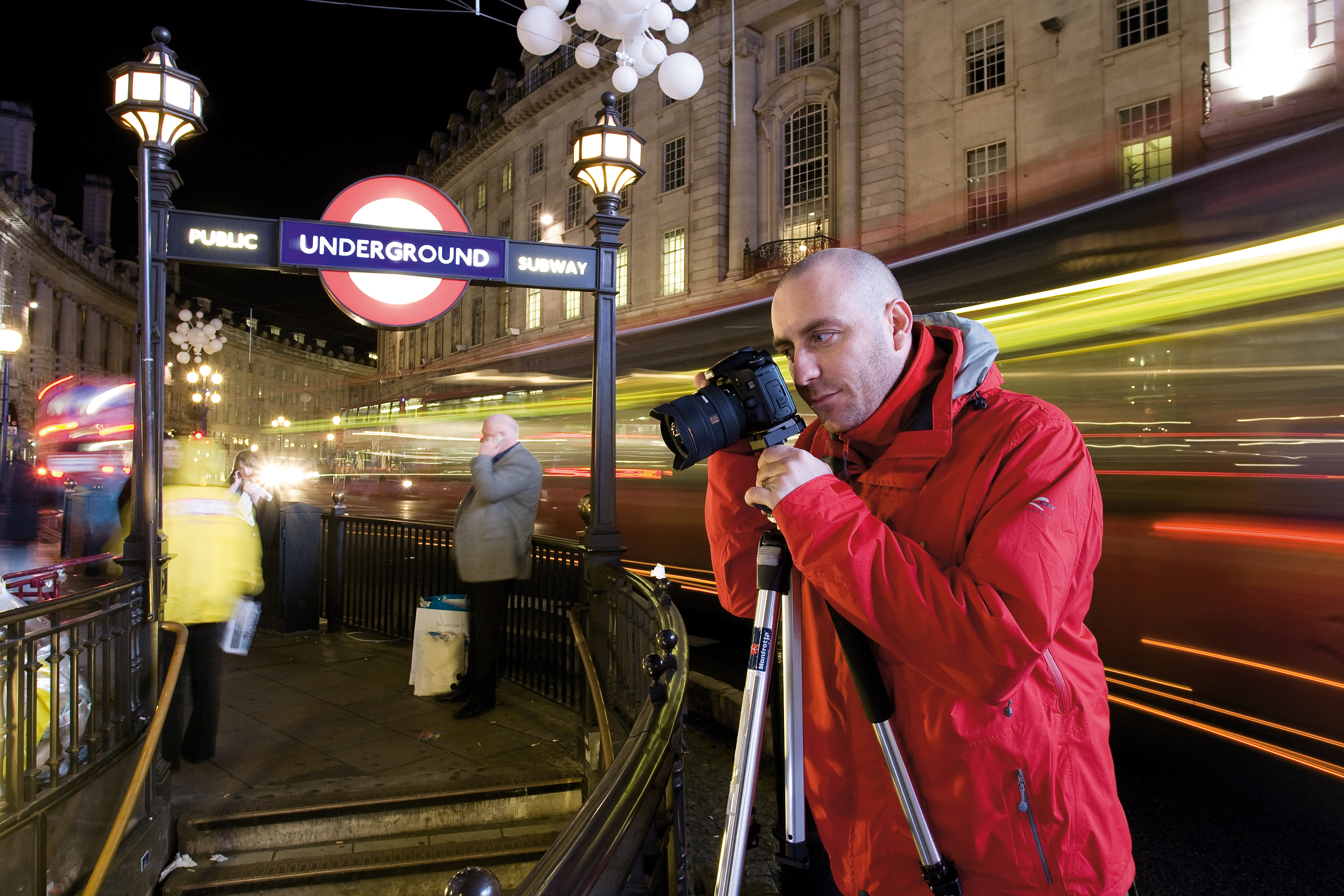
It's become rather a photography cliche to recommend a 'sturdy tripod' for general photography, but it's sound advice when it comes to night photography. You'll be working with long exposures, even with the aperture at its largest setting.
You can of course use a high ISO sensitivity in order to get faster shutter speeds, and in brightly-lit areas of towns and cities this can make handheld photography at night possible.
However, to reduce noise and achieve clean colors and to get the most from the camera sensor's dynamic range, there's no substitute for a tripod, low ISO sensitivity and the slow shutter speed it entailss.
- Gear guide: The 10 best tripods you can buy right now
Tip 2. Set up early
It's better to set up your tripod and camera equipment before it gets completely dark. Not only will this enable you to compose and focus shots more effectively, it also allows you to capture some color in the sky.
Floodlit architecture often looks its best when the sky is a deep blue color rather than coal black. As well as adding depth and interest and providing a cool contrast to the warm lighting, it also makes it easier to create a balanced exposure.
Tip 3. Choose the wrong white balance
A quick and easy camera technique to enhance landscapes photographed at night is to use the Tungsten white balance preset.
This is tuned to reduce the warmth of pictures taken in artificial light, and it gives scenes shot in moonlight a cool blue tone that accentuates the mood.
Get daily insight, inspiration and deals in your inbox
Sign up for breaking news, reviews, opinion, top tech deals, and more.
Combine this with a touch of underexposure, and even scenes shot during the day can appear as if they were taken at midnight.
If you shoot raw files you can leave the white balance adjustments till the raw conversion stage, as well as fine-tuning the exposure then too.
Tip 4. Shooting light trails
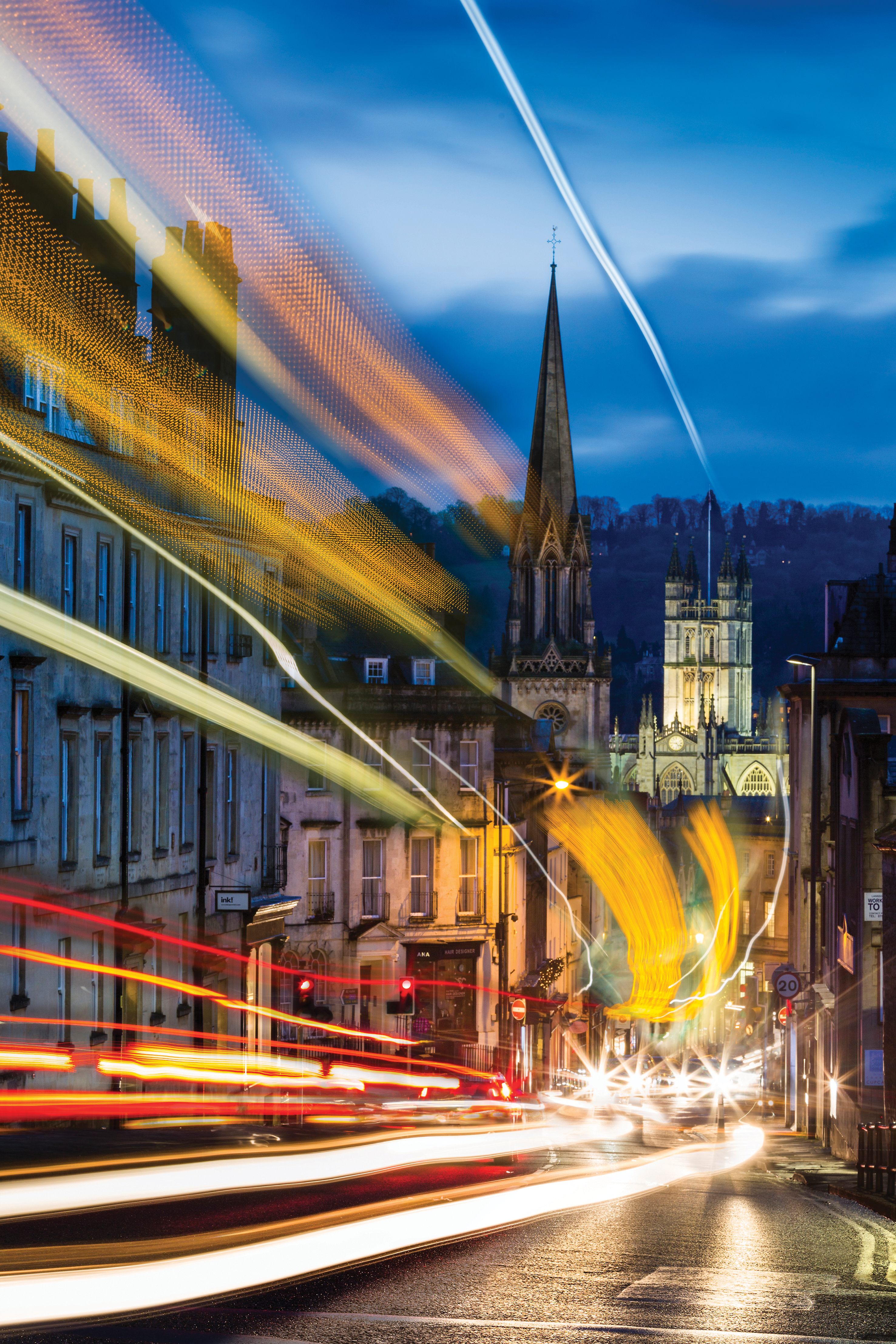
The classic night photography technique, requiring patience and persistence rather than a ton of specialist camera kit.
Simply use a slow exposure to render a moving light source - whether that's car headlights or a fast fairground ride - as bright streaks through the frame.
Lock the camera off on a tripod so that other elements of the picture are captured sharply, and time your shots to record the maximum amount of streaks.
When shooting car light trails or bursts of fireworks, it often pays to shoot numerous exposures and then blend these together in Photoshop. This way, pictures will feel much fuller and livelier.
Tip 5. Photographing star trails
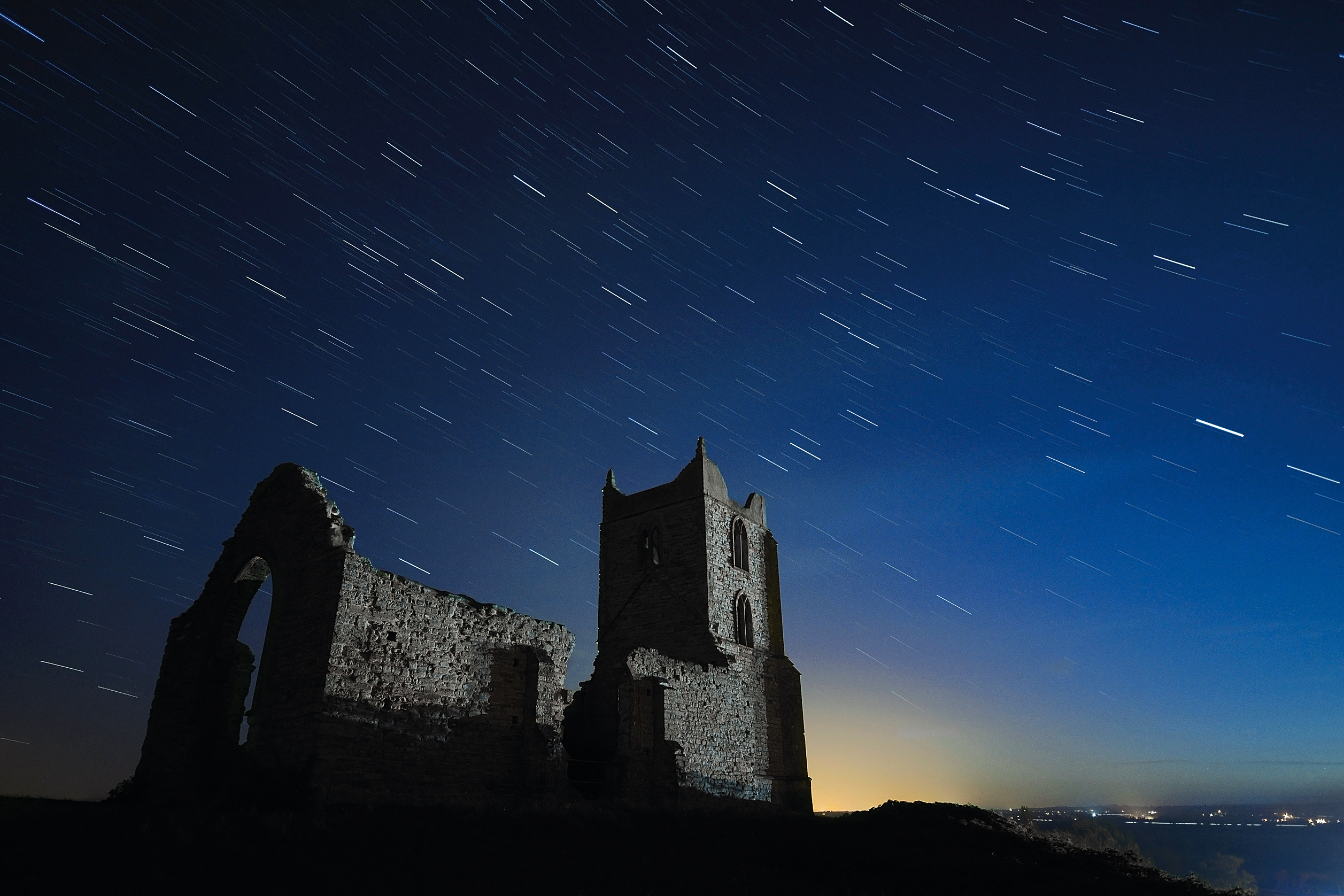
If you're not a patient photographer, look away now - or at least move to the next night photography technique. Photographing the sky at night as the Earth rotates can take hours.
Switch your camera to manual settings, and focus the lens at infinity. Using Bulb mode, set a low ISO to reduce digital noise, and a wide aperture such as f/2.8 to gather as much light as possible and keep exposure times comparatively short.
Keep the shutter held open with a lockable remote release for several minutes. You may find it requires an exposure of 30 minutes to record a substantial amount of trailing.
Shooting a number of shorter exposures and stacking these in Photoshop to build a dramatic rotating starscape image can help to reduce digital noise, compared to doing it all in one long exposure.
Tip 6. Light painting
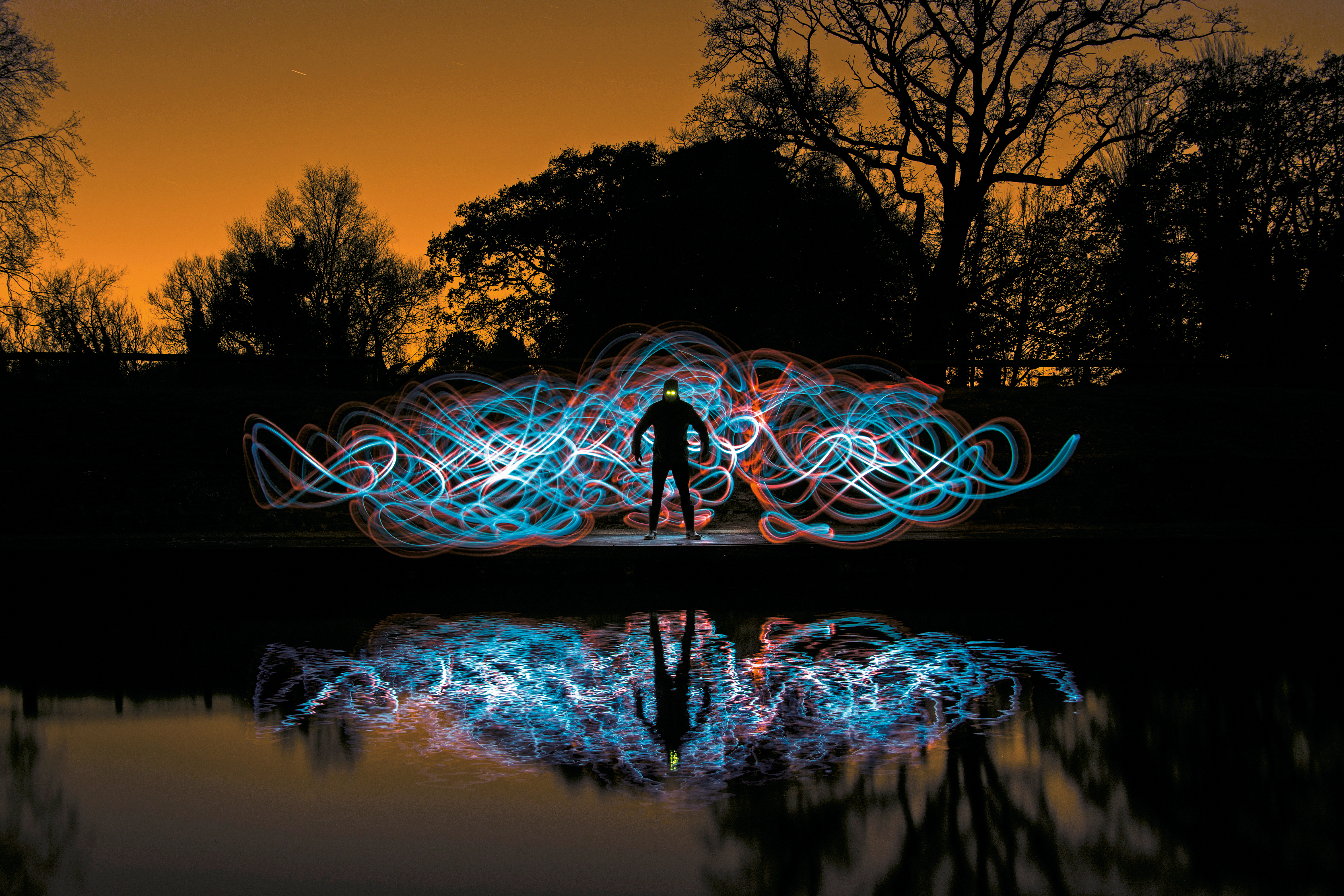
Try using a torch or flashgun to 'paint' a scene during a long exposure at night. Light painting is a popular photography technique that can be used on everything from still life photos to sweeping landscapes.
You'll need to set the camera to Bulb mode and use a lockable remote release to keep the shutter held open while you illuminate the subject.
Judging the perfect light painting exposure for a given scene and power of your light source, but exposures typically run into many minutes.
Keep the torch moving to prevent any hotspots, and check the exposures using the histogram on the rear screen - the light-painted features should be bright but not burning out.
Tip 7. Zoom bursts
While a zoom burst can produce dynamic photos in daylight, it's a photography technique that comes alive with night photography.
Zooming the lens either in or out during a long exposure while there are artificial lights in the frame creates bright, colorful light trails that transform the most mundane scene or subject.
For the straightest streaks, try this technique with the camera fixed to a tripod. Make sure the focal point is in the center of the frame, and try adding a blip of flash to add a sense of sharpness to static objects.
Tip 8. Photographing the moon
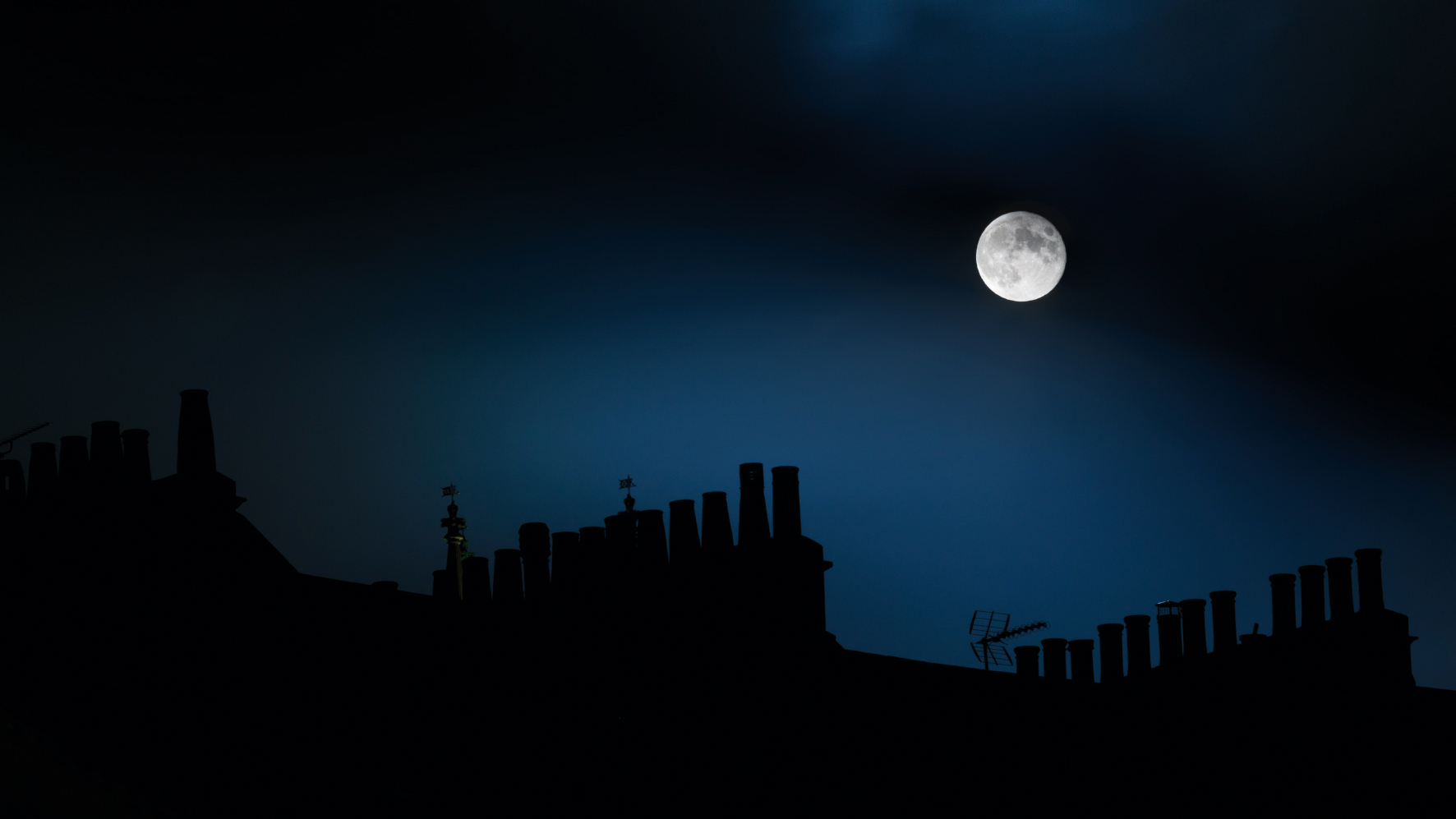
The rise of a full moon is one of the most predictable things in nature, so capturing the best moon photos comes down to preparation and prevailing weather conditions.
To make a photo where the moon looks large enough in the frame you'll need a telephoto lens - and the longer the better.
You're really looking at a 400mm lens as a minimum, which gives the equivalent view of a 600-640mm lens when attached to an APS-C DSLR.
Take a test shot and check the histogram. It's easy for the moon to be overexposed and you may need to dial in negative exposure compensation to reduce the brightness level.
Tip 9. Remove UV filters
If you use a UV or Skylight filter to protect the front element of your lens, now is the time to remove it. Leaving a UV filter attached for night photography will just create internal reflections - particularly noticeable effects when the moon or light sources in the frame.
Fit a lens hood instead. This will protect the lens from bumps and scratches, and also block stray light from entering the lens.
We're more used to shielding the front element during daylight hours, but street lights can cause flare just as readily as the sun.
You can also make your own DIY lens flare buster for night photography using a simple piece of black card - it can really make the difference when you're shooting under strong street lights.
Tip 10. Photographing cities at night

In terms of technique, photographing buildings at night draws on the familiar low light principles of long exposures, a tripod-mounted camera and a remote release to fire the shutter.
It's easy to overexpose brightly lit buildings, so take a test and check the histogram - activating your camera's highlight alert function can provide a quick guide to potential hotspots too.
Head out on clear nights following a day of rain, and use reflections in puddles to add brightness and color to dark foregrounds. Of course, rivers and canals can be used to capture reflections of buildings too.
Tip 11. Indoor photo projects
Taking photographs indoors in the dark can be just as rewarding as shooting outdoors at night.
One fun photography project to try is to shoot creative light spirals or spirograms. By suspending a lightweight pen torch from a ceiling using a length of string and sending it spinning, you can record the light patterns it creates using a long exposure.
You'll need to position your camera directly beneath the torch, so make sure the torch is secure!
Other tabletop home studio projects which work better with the lights off include smoke photography, water drops with high-speed flash and light-painting a still life photo.
Current page: Night photography techniques, tips and tricks
Prev Page Wildlife photography techniques, tips and tricks Next Page Street photography techniques, tips and tricksPhil Hall is an experienced writer and editor having worked on some of the largest photography magazines in the UK, and now edit the photography channel of TechRadar, the UK's biggest tech website and one of the largest in the world. He has also worked on numerous commercial projects, including working with manufacturers like Nikon and Fujifilm on bespoke printed and online camera guides, as well as writing technique blogs and copy for the John Lewis Technology guide.
